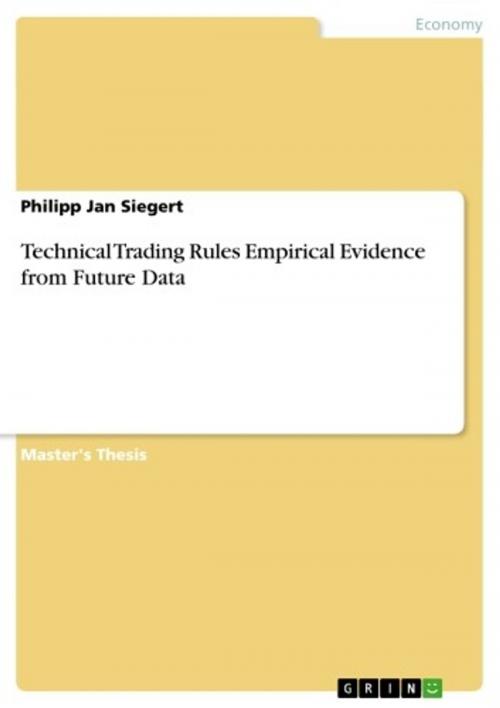Technical Trading Rules Empirical Evidence from Future Data
Business & Finance, Finance & Investing, Banks & Banking| Author: | Philipp Jan Siegert | ISBN: | 9783638432443 |
| Publisher: | GRIN Publishing | Publication: | October 27, 2005 |
| Imprint: | GRIN Publishing | Language: | English |
| Author: | Philipp Jan Siegert |
| ISBN: | 9783638432443 |
| Publisher: | GRIN Publishing |
| Publication: | October 27, 2005 |
| Imprint: | GRIN Publishing |
| Language: | English |
Master's Thesis from the year 2005 in the subject Business economics - Banking, Stock Exchanges, Insurance, Accounting, grade: A, Sophia Antipolis Campus (France); SKEMA Business School (Global Finance Chair), 27 entries in the bibliography, language: English, abstract: Most banks and the recently upcoming hedge fund industry rely to a different extent on technical trading rules and technical analysis. The fact that these technical trading rules yield superior returns in practice raises several questions that will be examined in the thesis. First, one of the most crucial questions is in which assets technical trading rules perform extraordinarily well. This analysis is based on a risk-return approach with an assessment of the negative standard deviation of each asset as a risk indicator. Second, the statistical significance of technical trading is examined by using a simulation method known as bootstrap. Third, null models are simulated to answer the question to what extent autoregressive models and GARCH models are able to capture the dependencies in the time series. Finally, a rule optimizer is used to assess if any rule parameters yield superior returns over a wide range of assets. We find that under a risk-return perspective trading rules look very attractive as most rules are able to significantly reduce the negative standard deviation compared to a buy-and-hold strategy. However, not all rules are able to outperform a simple buy-and-hold strategy in terms of absolute return. Statistical significance is generally weak and only some rules can be qualified as highly statistically significant. We do not find much evidence that autoregressive and GARCH null models perform well in capturing the dependencies that lead to superior returns of technical trading rules. With respect to trading rule parameters we find that shorter rules generally perform better when trading costs are not considered and that currencies benefited from a larger standard deviation trading band.
Master's Thesis from the year 2005 in the subject Business economics - Banking, Stock Exchanges, Insurance, Accounting, grade: A, Sophia Antipolis Campus (France); SKEMA Business School (Global Finance Chair), 27 entries in the bibliography, language: English, abstract: Most banks and the recently upcoming hedge fund industry rely to a different extent on technical trading rules and technical analysis. The fact that these technical trading rules yield superior returns in practice raises several questions that will be examined in the thesis. First, one of the most crucial questions is in which assets technical trading rules perform extraordinarily well. This analysis is based on a risk-return approach with an assessment of the negative standard deviation of each asset as a risk indicator. Second, the statistical significance of technical trading is examined by using a simulation method known as bootstrap. Third, null models are simulated to answer the question to what extent autoregressive models and GARCH models are able to capture the dependencies in the time series. Finally, a rule optimizer is used to assess if any rule parameters yield superior returns over a wide range of assets. We find that under a risk-return perspective trading rules look very attractive as most rules are able to significantly reduce the negative standard deviation compared to a buy-and-hold strategy. However, not all rules are able to outperform a simple buy-and-hold strategy in terms of absolute return. Statistical significance is generally weak and only some rules can be qualified as highly statistically significant. We do not find much evidence that autoregressive and GARCH null models perform well in capturing the dependencies that lead to superior returns of technical trading rules. With respect to trading rule parameters we find that shorter rules generally perform better when trading costs are not considered and that currencies benefited from a larger standard deviation trading band.















